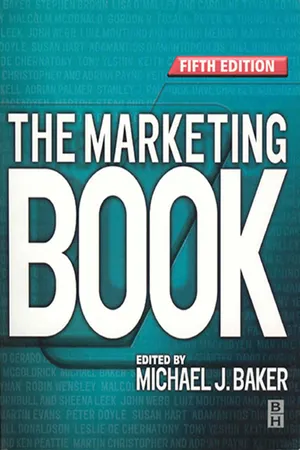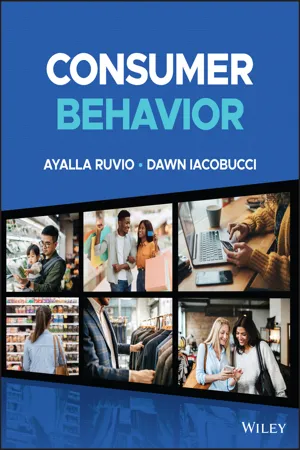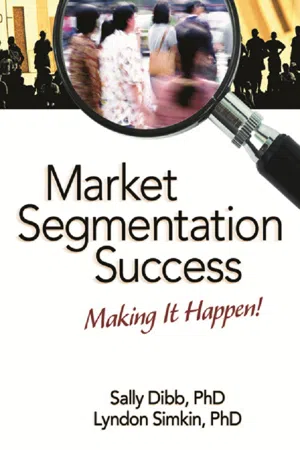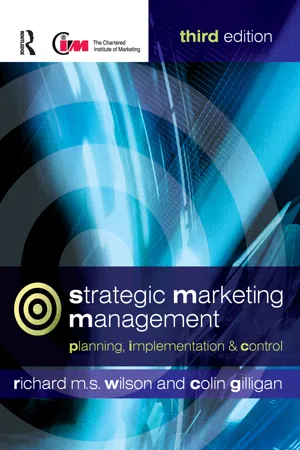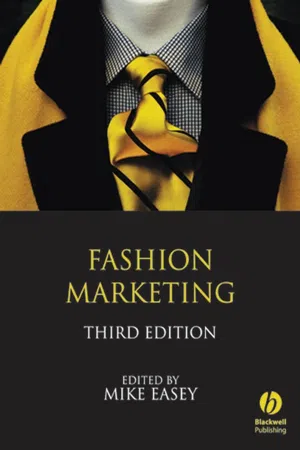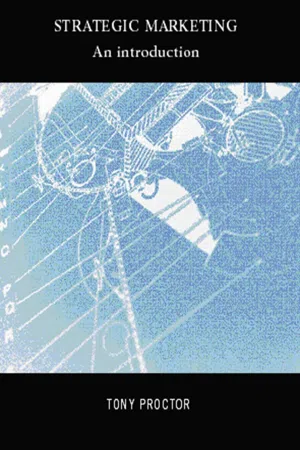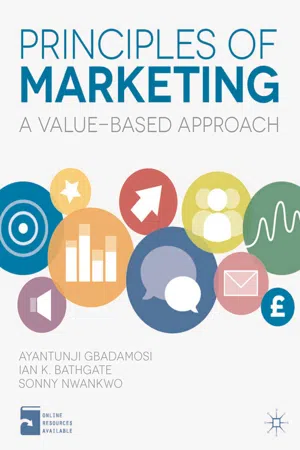Marketing
Buyer Decision Process
The buyer decision process refers to the series of steps that a consumer goes through when making a purchasing decision. It typically involves problem recognition, information search, evaluation of alternatives, purchase decision, and post-purchase evaluation. Understanding this process is crucial for marketers to effectively target and influence consumers at each stage of their decision-making journey.
Written by Perlego with AI-assistance
Related key terms
1 of 5
10 Key excerpts on "Buyer Decision Process"
- eBook - PDF
- William Pride, O. C. Ferrell(Authors)
- 2019(Publication Date)
- Cengage Learning EMEA(Publisher)
We follow this with an investiga- tion into how the customer’s level of involvement affects the type of decision making they use and discuss the types of consumer decision-making processes. Next, we explore situational influences—surroundings, time, purchase reason, and buyer’s mood and condition—that affect purchasing decisions. We go on to consider psychological influences on purchasing decisions: perception, motives, learning, attitudes, personality and self-concept, and lifestyles. Next, we discuss social influences that affect buying behavior, including roles, family, reference groups, digital influences, opinion leaders, social classes, and culture and subcultures. We conclude with a discussion of consumer misbehavior. 7-1 CONSUMER BUYING DECISION PROCESS The consumer buying decision process, shown in the bottom of Figure 7.1, includes five stages: problem recognition, information search, evaluation of alternatives, purchase, and postpurchase evaluation. Before we examine each stage, consider these important points. First, as shown in buying behavior The decision processes and actions of people involved in buying and using products consumer buying behavior The decision processes and purchasing activities of people who purchase products for personal or household use and not for business purposes Learning Objective 7-1 Recognize the stages of the consumer buying decision process. - eBook - ePub
- Richard M.S. Wilson, Colin Gilligan(Authors)
- 2010(Publication Date)
- Routledge(Publisher)
Figure 6.3 .Figure 6.3 The four types of buying behaviour (adapted fromAssael, 1987 )Understanding the Buying Decision Process
The third and final stage that we are concerned with here is the structure of the buying decision process that consumers go through. In other words, precisely how do consumers buy particular products? Do they, for example, search for information and make detailed comparisons, or do they rely largely upon the advice of a store assistant? Are they influenced significantly by price or by advertising? Questions such as these have led to a considerable amount of research into the buying process and subsequently to consumers being categorized either as deliberate buyers or compulsive buyers.To help in coming to terms with this, a series of models have been proposed that focus not simply upon the purchase decision, but upon the process leading up to this decision, the decision itself and then, subsequently, post-purchase behaviour.Here, the process begins with the consumer’s recognition of a problem, or perhaps more commonly, a want. This may emerge as the result of an internal stimulus (hunger or thirst) or an external stimulus in the form of an advertisement or a colleague’s comment. This leads to the search for information - eBook - ePub
- Michael Baker(Author)
- 2012(Publication Date)
- Routledge(Publisher)
As a result, modern marketing links production and consumption in a particular way, a managerial style known as consumer-orientated management. Unless a firm enjoys a monopoly, its managers have little discretion in the matter of adopting a consumer-orientated approach. Consumer affluence and competition among suppliers give buyers enormous discretion over what they buy, from whom they buy it, and how they pay. They have discretion not only over what they spend their money on, but to whom they listen, by whom they are persuaded. And it has long been known that consumers are far more likely to be influenced by the word-of-mouth evaluations of other consumers than by formal marketing communications. This managerial style is forced on to the firm if it is to survive and prosper. The need to understand consumer behaviour is, therefore, premier if it is to be forecast, anticipated and stimulated by marketing management.The Consumer Decision ProcessThis means more than monitoring sales: consumer-orientated marketing needs a far wider definition of consumer behaviour. Engel et al. (1991, p. 4) define their subject matter as ‘those activities directly involved in obtaining, consuming, and disposing of products and services, including the decision processes that precede and follow these actions’. In addition to making a purchase, therefore, we shall understand consumer behaviour to include any pre-purchase and post-purchase activities that are relevant to marketing management. Pre-purchase activities would include the growing awareness of a want or need, and the search for and evaluation of information about the products and brands that might satisfy it. Post-purchase activities would include the evaluation of the purchased item in use, and any attempt to assuage feelings of anxiety which frequently follow the purchase of an expensive and infrequently bought item such as a car. Each of these influences whether consumers will repurchase a chosen brand, what they will tell other potential buyers, and how amenable they are to marketing communications and the other elements of the marketing mix.Consumer behaviour, we have seen, can be modelled as a cognitive process, an intellectual sequence of thinking, evaluating and deciding. These information processing activities are believed to shape the more overt aspects of choice: acquiring information from a sales-person, placing an order, using the product selected, and so on. The inputs to the process are the most basic bits of data available to the consumer, stimuli from the environment in the form of marketing messages and conversations with friends and relatives. The processing itself consists of the mental treatment of these data as the consumer stores them, links them with existing ideas and memories, and evaluates their relevance to his or her personal goals. The outputs are the attitudes the consumer forms towards, say, an advertised brand, an intention to buy or postpone buying, and – if attitude and intention are positive – the act of purchase. A similar sequence characterizes the use of the purchased item: it is evaluated again in use and a decision is reached about its suitability for repurchase. - eBook - PDF
- Ayalla Ruvio, Dawn Iacobucci(Authors)
- 2023(Publication Date)
- Wiley(Publisher)
57 PART II Consumer Buying Process 58 4 You want to buy a new car. What are the stages you’ll go through from the moment you realized that you need a new car to the moment you purchase one? How many models or brands will you consider? What are the most important criteria for you in a car? Appearance? Reliability? Fuel efficiency? Warranty? Cost of repairs? Resale value? Where would you get the information that you need? Friends? Family? Online? There are so many decisions to make for one simple action. Consumer Decision-Making Consumers make decisions every day, sometimes multiple times a day, about the products they want (or do not want) to purchase. A consumer’s decision-making process, or the buyer’s journey, reflects the stages that consumers go through before, during, and after they purchase a product or service. In other words, it’s the process consumers undertake between recognizing a need and satisfying it. This process can be simple or complex depending on product-related fac- tors (e.g. the risk of purchasing it, options available) or consumer-related factors (e.g. expertise or knowledge, level of involvement). 1 A simple view of consumers’ buying behavior is illustrated in Figure 4.1. Marketers try to map this process, yet a large part of it is not explicit. That’s why it is often referred to as a black box. We can only observe and document the outcomes, such as what brands and products consumers buy, how much money they spend, and when they spend it. Nevertheless, marketers can take strategic actions by implementing the marketing mix, to influence consumers throughout the process. Understanding this process is critical for companies. 2 Mapping and monitoring it via extensive data collection, such as scanner data, can inform marketers about some of the pain points that consumers experience during the process. - eBook - ePub
Consumer Behavior in Action
Real-life Applications for Marketing Managers
- Geoffrey Paul Lantos(Author)
- 2015(Publication Date)
- Routledge(Publisher)
consumer decision-making process entails the steps consumers go through to make decisions between marketplace alternatives. Alternatives include product choice (e.g., fly a plane or take the train; buy boxers or briefs); brand choice (McDonald’s or Burger King); store choice (Target or Kohl’s); brand item options (colors, styles, scents, flavors, etc.); paying with cash, credit, or debit; using paper bags or plastic, and even whether or not to make a purchase at all. Focus in this exercise is primarily on brand choice decisions, since this is the most common type of choice.DECISION MAKING : A FIVE -STAGE PROCESS
There are five sequential stages in the consumer decision-making process, which are overviewed in Exhibit 3.1 . At the end of each of the first three stages in the flow chart, there is a “hold” box, indicating that the consumer can either temporarily or permanently stop the process for reasons such as lack of time or money, a belief that there are no good alternatives to choose from, or perceived difficulty of learning to use a product.The marketer’s general task is to lead consumers through the five stages. We will describe consumer activities at each step of the decision continuum and the marketer’s specific corresponding tasks at each stage.STAGE 1. PROBLEM RECOGNITIONProblem recognition (need recognition, need arousal) is the consequence of an unsatisfied felt need or want or an unsolved problem. It occurs when the consumer experiences a discrepancy between her desired (ideal) state of affairs and her actual (current) state of affairs - eBook - ePub
Market Segmentation Success
Making It Happen!
- Sally Dibb, Lyndon Simkin(Authors)
- 2008(Publication Date)
- Routledge(Publisher)
Although managers often claim to have an in-depth grasp of their customers’ buying process, sometimes this is far from the reality. Many organizations have only the most basic understanding of what customers go through when buying their product. This is often compounded because marketing or brand managers, by virtue of their positions, may not act as “normal” customers for their organizations’ products. Those whose organizations are trading in consumer markets may receive favorable staff discounts or low-cost deals. The car industry is a classic example, with some manufacturers offering low-priced schemes for the long-term rental of vehicles to employees. Often servicing and maintenance is part of the deal, so employees are “shielded” from the reality of owning and operating their organization’s products. For managers whose organizations operate within business-to-business markets, the problem is that they as consumers are unlikely to have the relevant experience of buying the products. Even if they do have occasion to purchase “their” product or brand, these managers’ perspectives are unlikely to be the same as if they were detached and dispassionate.It is a sad fact that many organizations fail to establish an adequate understanding of their customers. Discipline is needed to encourage and develop a deep appreciation of customers and prospects. Some of this discipline comes from breaking the buying experience down into its constituent parts. Academics have devoted considerable effort to summarizing or modeling the buying process. These models can be used to encourage managers to think through every aspect of the purchase sequence, “walking” with customers as they progress through their buying activity. In essence, this is what “accompanied” shopping marketing research is trying to achieve—forcing organizations to live through the actuality of buying their products. Without insights into the behavior of consumers or business customers it is difficult to contemplate undertaking segmentation (Birkhead, 2001; Dibb et al., 2006).Consumer Buying Decision Process
Figure 3.1 - eBook - ePub
- Richard M.S. Wilson, Colin Gilligan(Authors)
- 2012(Publication Date)
- Routledge(Publisher)
In practice, of course, it is possible to identify several types of buying decision and hence several types of buying behaviour. The most obvious distinction to make is based on the expense, complexity, risk and opportunity cost of the purchase decision – the process a consumer goes through in deciding on a new car or major holiday, for example, will be radically different from the process in deciding whether to buy a chocolate bar. Recognition of this has led Assael (1987, Chapter 4) to distinguish between four types of buying behaviour, depending on the degree of buyer involvement in the purchase and the extent to which brands differ. This is illustrated in Figure 5.4. Figure 5.4 The four types of buying behaviour (adapted from Assael, 1987) Understanding the buying decision process The third and final stage that we are concerned with here is the structure of the buying decision process that consumers go through. In other words, precisely how do consumers buy particular products? Do they, for example, search for information and make detailed comparisons, or do they rely largely upon the advice of a store assistant? Are they influenced significantly by price or by advertising? Questions such as these have led to a considerable amount of research into the buying process and subsequently to consumers being categorized either as deliberate buyers or compulsive buyers. To help in coming to terms with this, a series of models have been proposed that focus not simply upon the purchase decision, but upon the process leading up to this decision, the decision itself, and then subsequently post-purchase behaviour. An example of this sort of model is illustrated in Figure 5.5. A sequential model of the buying process Here, the process begins with the consumer ’s recognition of a problem, or perhaps more commonly, a want. This may emerge as the result of an internal stimulus (hunger or thirst) or an external stimulus in the form of an advertisement or a colleague’s comment - eBook - PDF
- Mike Easey(Author)
- 2009(Publication Date)
- Wiley(Publisher)
These three main external types of informa-tion sources are usually regarded with different degrees of credibility by the consumer. Problem recognition Information search Evaluation of alternatives Purchase Post-purchase evaluation Figure 3.2 The consumer decision process. Fashion Marketing 72 When sufficient information is held by the consumer about pos-sible solutions then evaluations take place and a choice is made. The nature of the evaluations varies from individual to individual. Some consumers have extensive repertoires of buying criteria, whereas others have limited and often vague mechanisms for making deci-sions. The process of making an evaluation may involve the mental ranking or rating of alternatives or simply eliminating items that fail to meet a certain threshold. At times consumers can suffer what is described as information overload where there are too many possi-bilities or too much information has been presented. An awareness of consumer information needs and the provision of information in an appropriate manner via facts and advice from sales staff or brochures can help the consumer to make a choice. The decisions made by a consumer at the time of purchase have been mentioned earlier and the sales effort to influence purchase is covered in Chapter Nine. After a purchase consumers may engage in a process of evalu-ation of the product and to an extent their own efficiency as a con-sumer. Systematic evaluation is most unlikely except where items are bought primarily for their functional characteristics, such as hiking boots where protection and durability may be closely scrutinized. The extent of evaluation seems related to how socially conspicuous the item is, how central the product is to the self-image of the consumer, the particular consumer orientation and also to the purchase price. For most consumers, the evaluation can involve seeking comments from others perceived to be significant. - No longer available |Learn more
Strategic Marketing
An Introduction
- Tony Proctor(Author)
- 2002(Publication Date)
- Routledge(Publisher)
Consumers engage in this form of pre-purchase activity when they buy products only occasionally and when information is required regarding an unfamiliar brand. People spend a moderate amount of time gathering information and deliberating upon it prior to making a purchase. For example, if a new improved version of a brand of shampoo is introduced consumers will perhaps ask a friend who has used the product about its performance or even watch a commercial before they consider trying the product for themselves. Marketing strategists need to pay attention to advertising that is informative in nature and which provides the potential purchasers with the kind of information they need to aid them in their decision making.Complex buying decisions
Many people have studied consumer behaviour and a five-stage model of the buying process has been distilled from these researches (see Engel et al., 1986).The implication is that consumers actually pass through all the stages in buying a product or service. In actual fact, of course, as we have seen in the case of habitual purchases, this is not necessarily the case. However, it is a useful framework from within which to view the purchase of many of the more expensive types of durable products and services.Let us look in more detail at each of these stages in turn.Figure 8.1 Complex buying decisionProblem recognition
First the prospective purchaser has to experience a need to buy a certain product, for example, a new hi-fi system. The need can be triggered by a variety of things, for instance the unsatisf actor y performance of the current hi-fi system or the fact that a neighbour has bought a new one. The marketing strategist needs to identify the factors which give rise to the recognition of the problem and use these to advantage in marketing communications about the par ticular product, service or brand.Information search
Once the problem has been recognized, prospective purchasers search for information about the product in question. A person who has recognized a need for a new hi-fi system, for example, may scan many hi-fi magazines for information on what is available and at what price. This scanning helps to identify locations where the products or service may be purchased and the intending buyer may well visit these locations to obtain more information and possibly to listen to a number of different hi-fi systems. - eBook - PDF
Principles of Marketing
A Value-Based Approach
- Ayantunji Gbadamosi, Ian Bathgate, Sonny Nwankwo(Authors)
- 2013(Publication Date)
- Bloomsbury Academic(Publisher)
A consumer is the user of the product or service. The consumer may not have paid for the product or service. For example, a chocolate manufacturing company makes own-label chocolate bars for a major supermarket. So, in this case, the customer is the supermarket to which it supplies bars. The consumer is the individual who consumes the chocolate. In terms of its marketing effort, the manufacturing company needs to understand the needs and wants of both the customer and the consumer. If you choose to purchase the chocolate and you eat istock © Picsfive khan 75 3 it, you are the customer and consumer. If, though, your child chooses and eats the chocolate but you pay for it, your child is the consumer and you are the customer. Consumers and customers may not demonstrate the same beliefs, values and atti-tudes. Marketers often try to influence the consumers (in this case, children) and exploit the power they have over the customers (in this case, parents). For instance, they may advertise tempting toys or food items during breaks in children’s television programmes or place sweets within reach of small children in supermarkets. They are attempting to use children to persuade parents to purchase their product. As a result, these types of marketing activities are criticized for addressing the wants of children without much consideration for the expectations of their parents, the customers. Consumer decision-making process A consumer goes through five key stages when making a purchase decision: problem recognition, information search, alternative evaluation, purchase decision and post-purchase evaluation. The following sections of the chapter will briefly explain these key stages. Need recognition: Need arousal or recognition factors are the starting point for any purchase decision and occur when an individual discovers a change in what he or she perceives to be an ideal state versus their actual (current) state and is both exter-nally and internally influenced.
Index pages curate the most relevant extracts from our library of academic textbooks. They’ve been created using an in-house natural language model (NLM), each adding context and meaning to key research topics.


